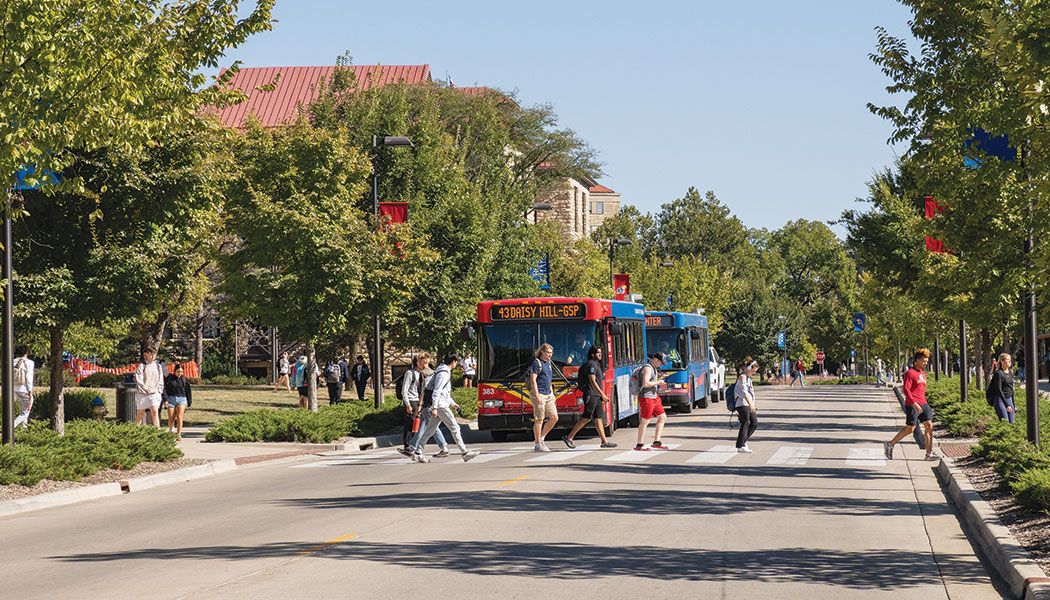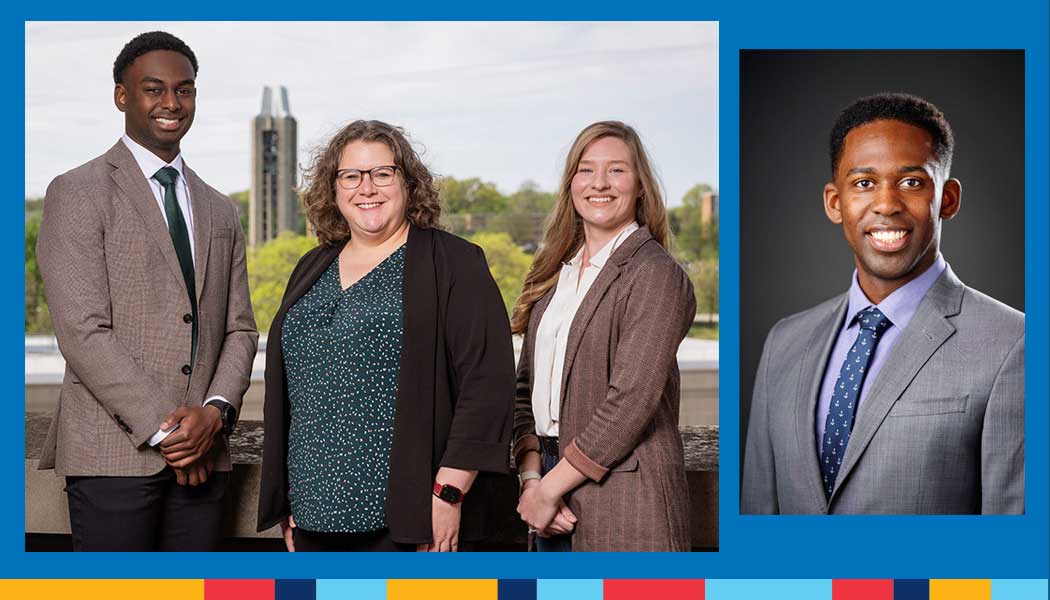‘Banner year’: KU enrollment numbers rise ‘by every metric’
The growth includes the largest freshman class in KU history.

Chancellor Doug Girod on Sept. 27 announced the “incredible news” that KU had welcomed 5,259 new Jayhawks in the fall 2023 freshman class, setting an all-time record that represents “a whopping 18% year-over-year from last year, which was the second-largest class in history.”
Girod credited several factors for the surge: marketing and recruitment strategies; realigned financial aid packages, plus additional need-based financial aid provided by the state; a vibrant national profile, thanks in part to KU’s stature as a research university and its successful athletics programs; and the lustrous new Jayhawk Welcome Center at the Adams Alumni Center.
This year’s freshman class arrived with an average GPA of 3.65, just .01 less than the records set in 2021 and 2022.
Officials also described this year’s freshmen as “the most diverse class” in history, with growth of 14.8% in minority students. Overall, 25.7% of all KU students are from underrepresented groups—the highest percentage on record and an overall increase of 9.4% from last year.
Total enrollment across all classes and campuses is 29,355, a jump of 6.2% and the largest enrollment since 2010.
“Without question,” Girod said, “this is a banner year for KU.”
Nick Stevens, b’06, vice provost for enrollment management, noted that international undergraduate enrollment was flat, adding that enrollment and admissions teams will work closely with international affairs colleagues to boost that category for 2024. Otherwise, Stevens, like the chancellor, offered nothing but good news.
“The main surprise,” Stevens said, “is that every type of student and market segment was up by every metric. That was definitely a surprise for us. Some days it honestly made it difficult what to focus on for that last push, but it’s a good problem to have.”
Lisa Pinamonti Kress, g’98, director of admissions, cited KU’s switch to awarding merit scholarships based only on GPA as a contributing factor to bigger and better numbers. She also praised the combined influences of student ambassadors and the Jayhawk Welcome Center on the campus visit program.
“We work hard to personalize our recruitment efforts, which I feel is somewhat of a surprise being at a large public university,” Kress said. “People comment that they weren’t expecting handwritten postcards from their admissions representative or from the ambassador on their campus tour. I think that personalization is impressive and makes them feel like we want them here—which is exactly what it’s intended to do.”
After Kress praised the Jayhawk Welcome Center’s “wow factor,” the chancellor credited the Alumni Association fundraising that made the project possible. “What an asset it’s been,” he said.
“Just last week,” Kress said Oct. 10, “someone said, ‘We’ve been to five places, and this visit was the best out of all of them,’ and the student on Friday convinced her parents to stay the night so they could go to the game on Saturday. She sent me an email and said she plans to be a Jayhawk, so that makes all the difference.”
Amid the well-deserved celebrations, Girod also reminded the University community of its responsibility to help ensure that the new Jayhawks enjoy successful academic careers and advance steadily toward their walk down the Hill at Commencement. Although the six-year graduation rate this year reached 68.7%—what Stevens described as a “significant bump” of 1.4%, in a category where even 1% growth is difficult to achieve—work remains.
“It’s great that we’re at all-time highs, particularly in the graduation rate category, by far the best in the state,” Girod said, “but it’s certainly not where we want it
to be.”
Noting the Dec. 1 scholarship application deadline, Girod in his Sept. 27 message to campus urged all Jayhawks to “remain focused on our efforts to recruit and retain students and create a university they want to attend. Higher education is facing strong headwinds, and enrollments nationally are expected to drop in the coming years. That’s why we must continue to improve our university through our strategic priorities, which align with the Kansas Board of Regents’ strategic plan, the needs of Kansas businesses and communities, and our aspirations as one of the nation’s leading research institutions.”
For those interested in detailed breakdowns of enrollment numbers, links to data pages can be found in KU welcomes largest freshman class in history, grows enrollment to highest level since 2010.

Largest freshman class ever
• 5,259 new Jayhawks (+18% from 2022)
• 3.65 average high school GPA
• 1,457 minority freshmen (+14.8% and the largest freshman total in history)
• In-state freshmen: +13.8%
• Out-of-state freshmen: +24%
• Architecture, Business, Education, Engineering and Journalism set new freshman enrollment records.
Overall enrollment
• 29,355 students (+6.2%, the highest total since 2010)
• Lawrence/Edwards: +6.7%
• KU Medical Center: +3.2%
• 25.7% Overall minority enrollment (+9.4% to 7,547 students, the largest in history)
• 1,924 active-duty, veteran, military-connected students (+28%, highest total on record)
Freshman retention
• 85.1% of fall 2022 first-year, full-time students returned (higher than the previous two years’ percentages of 84.7% each)
Full-time freshman graduation
• 55.5% of the fall 2019 class graduated in 4 years (highest on record)
• 66.1% of the fall 2018 class graduated in 5 years (highest on record)
• 68.7% of the fall 2017 class graduated in 6 years (highest on record)

Chris Lazzarino, j’86, is associate editor of Kansas Alumni magazine.
Photo by Steve Puppe
/




